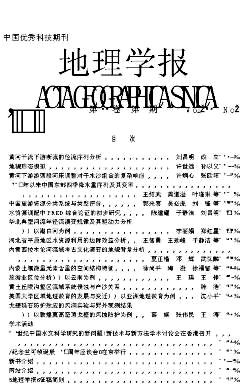WANG Jin feng, LI Lian fa, GE Yong, SHI Pei zhong, GUAN Yuan xiu, BUO Yanchen, WANG Zhi yong, Haining Robert
Spatial analysis refers to a series of techniques for analysing, simulating, predicting and coordinating the spatial processes. It is necessary to propose a new theoretic framework to integrate coherently the existing wide range of spatial analysis techniques, including spatial statistic indices, spatial regression and adaptive modelling, spatial mechanism dynamic modelling, integrated spatial statistic and spatial mechanism modelling, and spatial complicated system modelling, combining with analytic, numerical and analytic+knownledge solution. The unique characteristics of spatial data in its form and relationship among them require special tackling techniques. Spatial-temporal-attribute process summarizes the sub processes of spatial and related sub processes (Fig.1). Spatial-temporal process: diseases diffusion; morphology change: river course change; GIS space: disaster distribution and ore deposit; spatial pattern: distribution of river network and disease; time series: water level curve; and classic statistics: dicing. Based on the different theoretic frameworks of spatial analysis, a new theoretic framework, covering the wider range of techniques, has been setup (Tab.2), which consists with (1) the reasons of spatial association, in raw data and in residual of model. (2) the representation of spatial association: spatial structure and spatial interaction. (3) spatial data modelling: (3a) spatial point distribution (point pattern, spatial sampling, location choice); (3b) spatial linear regression equation (with spatial correlation structure in general form, in governing equation, and in residual), kriging, and filter; (3c) spatial nonlinear equation: regression, adaptive, and others; (3d) stochastic equation: distribution, and error propagation. (4) spatial mechanism dynamic modelling: (4a) human society (behavior, traffic network, etc.); (4b) physical (GCM, hydraulic, heat transfer, etc.). (5) spatial complicated system modelling: neural network, fractal, CA, etc. (6) spatial mechanism with stochastic modelling; (7) spatial graphic analysis; (8) spatial optimalization. (9) algorithms for spatial models: (9a) consequences of OLS (with spatial correlation in governing equation, and in residuals); (9b) spatial algorithms. (10) testing of performance (residuals, and governing equations).
